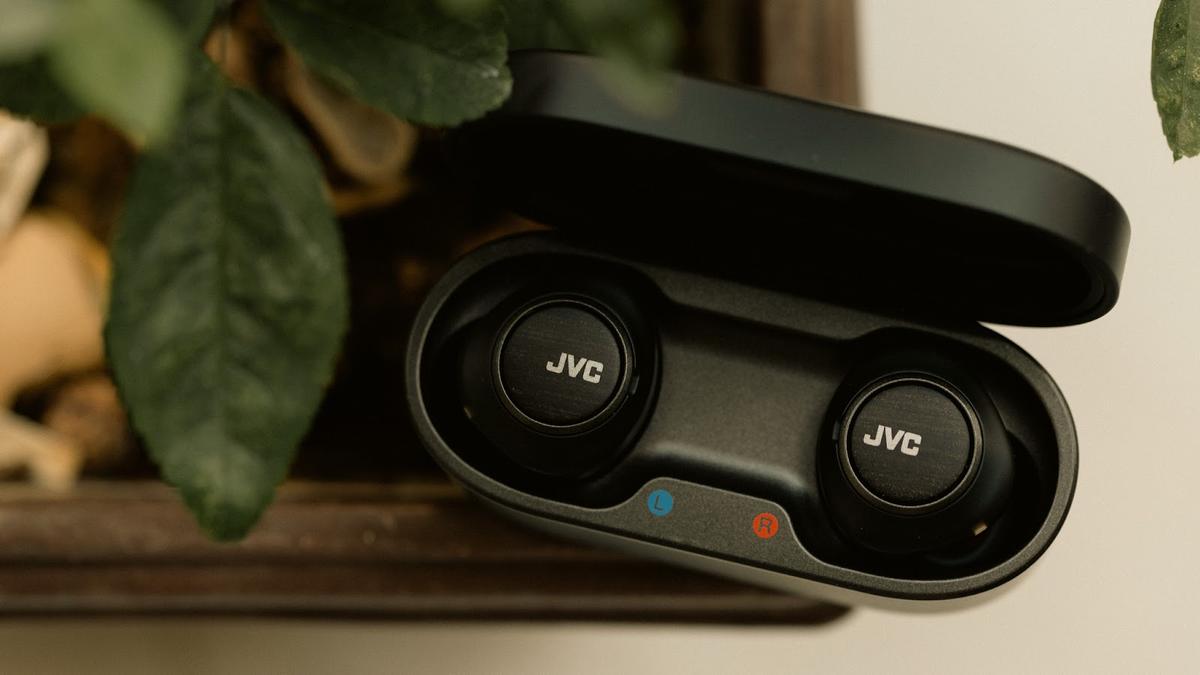The JVC HA-FW1000T have class-leading ANC performance and a unique timbre but fall behind on the basics.
- Great build, unique design
- Very comfortable to wear for longer periods
- Class-leading ANC
- Good mic performance
- Natural timbre with a realistic rendition of strings and pianos
- Rich, textured bass response
- Excellent wear detection
- No app support
- Max volume might not be enough for some
- Mic sounds muffled and muted
- Delay after tap operation
- Recessed midrange
- Treble can sound splashy at times
- Overpriced
Where to Buy
Introduction
JVC is one of the pioneers in the audio industry, boasting a portfolio of patents and “first-ever” products that few can match. The HA-FW1000T (FW1000T from hereon) are the first TWS IEMs in their famed wood series IEM lineup.
JVC promises class-leading ANC and higher-fidelity playback via proprietary K2 upsampler technology. Add to that the expectation of a warm, inviting signature long associated with the wood lineup, and you have a lot of boxes that the FW1000T need to tick to get a passing grade.
The high asking price is doing them no favor, either. So how many of the expectations do the FW1000T manage to meet? Let’s find out.
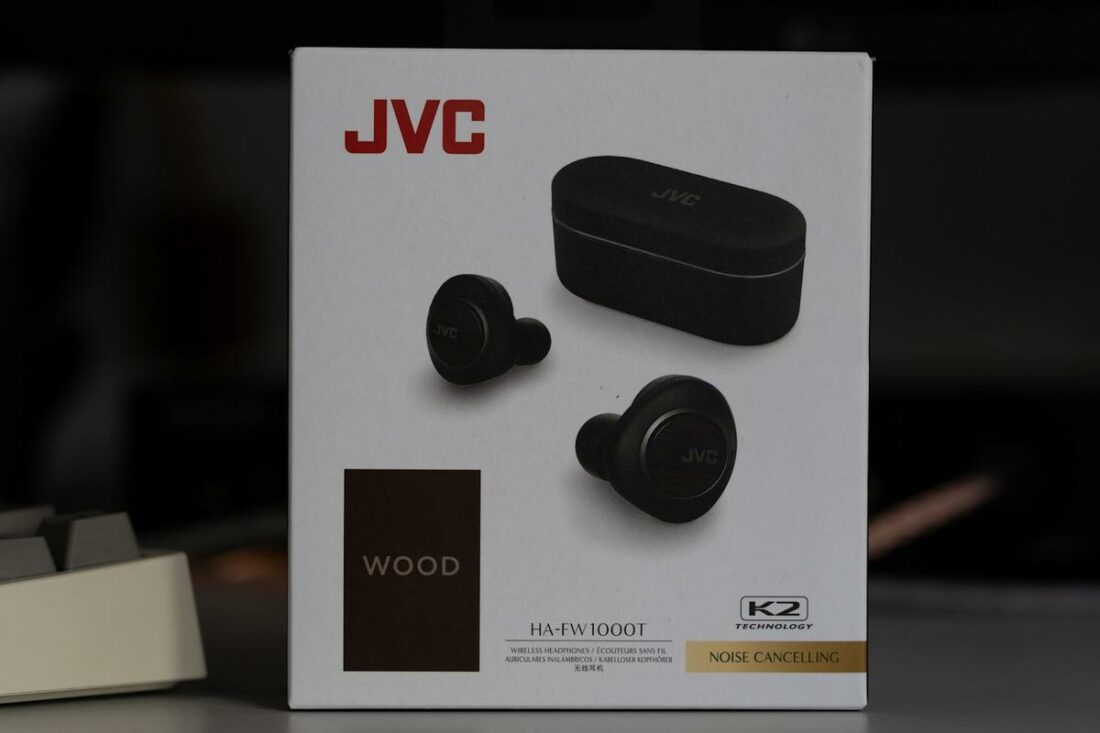
Case ⓘ
Battery ⓘ
- Battery Life: 12
- Connector: USB Type-C
- Wireless Charging: Yes
- Battery Capacity: Not specified
Battery life is above average given the TWS landscape, with the case holding 12 hours of extra charge, taking the total battery life to about 18 hours (with ANC on). I have to charge the FW1000T once a week.
There is no wireless charging on the JVC FW1000T, and you must rely solely on the type-C port.
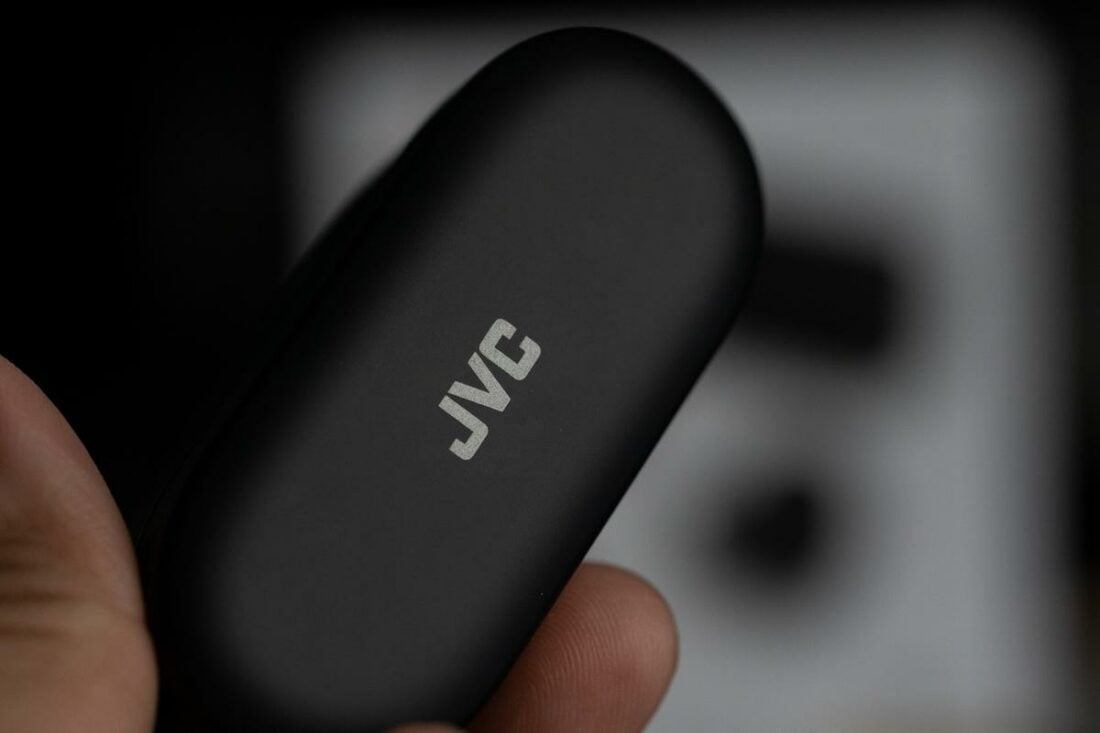
UX ⓘ
- Can be opened easily with one hand: Yes
- Pass the shake test: Yes
- Light Indicators: Shows estimated battery life left and shows charging indicator
The case can be easily opened with one hand. The IEMs are held securely via magnets and will not fall out even when shaking the case with the lid open.
Four “hidden” LEDs on the front show the case’s estimated battery level. These LEDs also light up while charging.
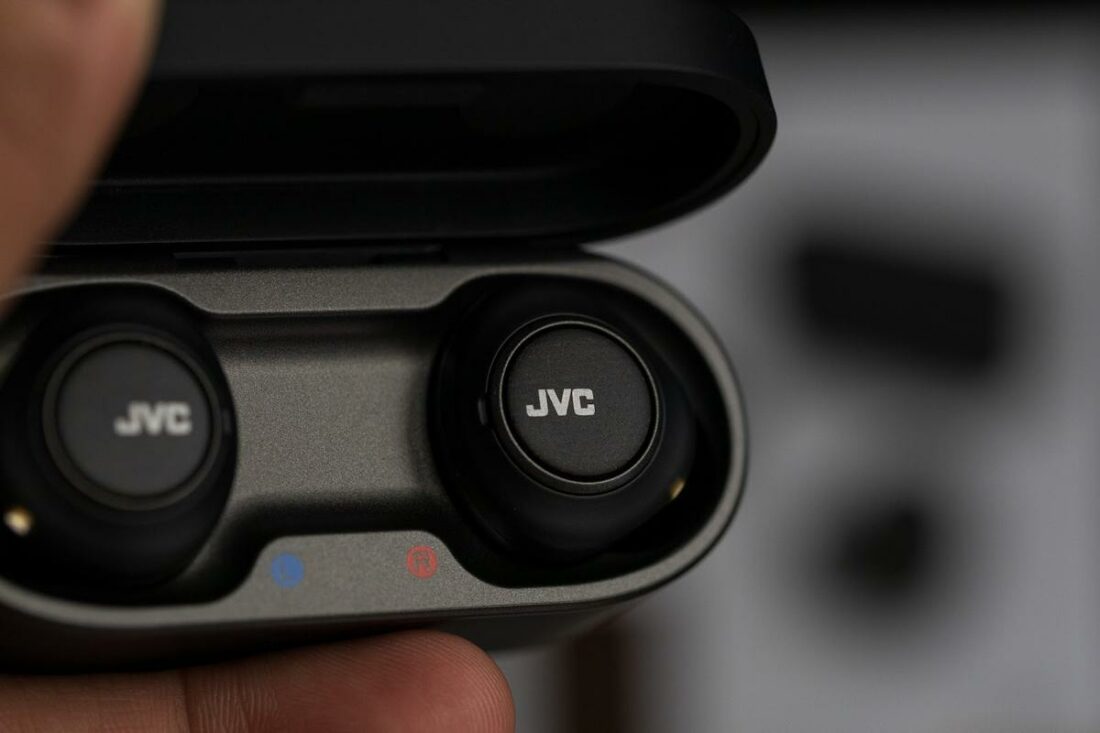
Design ⓘ
- Shape of the case: Square
- Material: Matte, soft-touch plastic
- Build Quality: Premium
There are some similarities between the design of the FW1000T and the Sony WF-1000XM4 case. Both are on the large side and have a similarly square profile and a soft-touch finish. However, the JVC’s rounder edges make the FW1000T case easier to pocket and handle.
Portability ⓘ
- Weight: 45g (case only), 60.6g (with earbuds)
- Volume: 7.62 cm x 3.5 cm x 2.85 cm = 76 cm cu
- Portability: Good
The case attracts some fingerprints and smudges but not to an extreme degree. During my two months of ownership, I did not notice any discoloration of the letters or scratches on the housing.
Earbuds ⓘ
Battery ⓘ
- Battery Life: 5.5 hrs (with ANC), 8 hrs (without ANC)
- Charge Time (10 mins): 100 mins playback time
The earbuds last about 5.5 hours before they run dry (with ANC on). You can turn off the ANC and get 8 hrs on a single charge. The “K2” option is turned on default for the AAC and SBC codecs, further impacting battery life – more on this in the sound section.
The FW1000T need about 2 hours to charge fully, including the case, but you can get up to 90 minutes of playback time with just 10 minutes of charge.
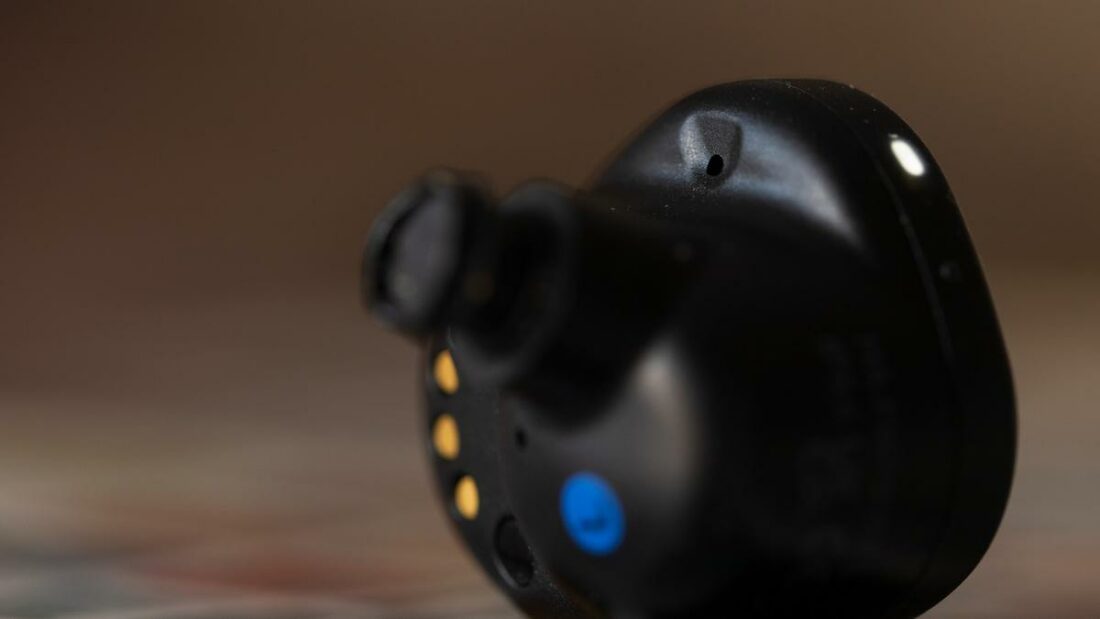
UX ⓘ
- Control Mechanism: Touch
- Touch Accuracy: Good
- Control Symmetry on both earbuds: No
- Mono Use: Yes, both sides
The circular faceplate acts as a touch-sensitive panel to control various aspects of the IEMs. Touch accuracy is good, with accidental touches mostly being avoided.
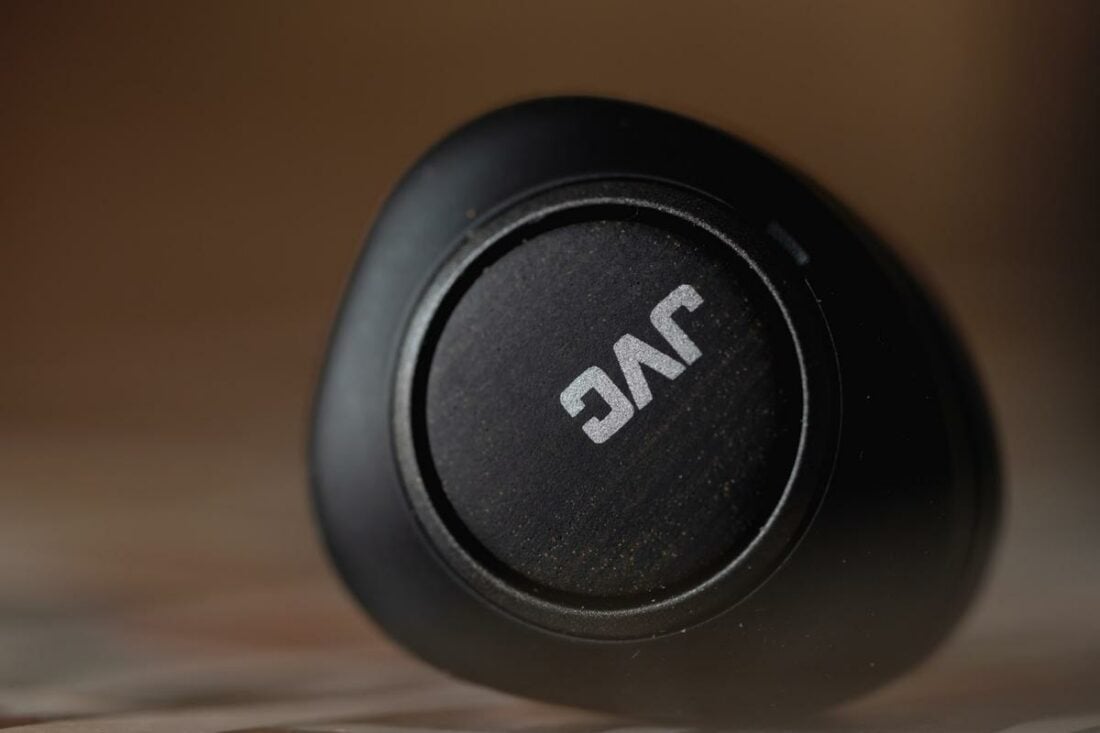
Unfortunately, the controls are fixed, and you cannot mix and match. Moreover, there is a slight delay between the registration of “taps” and the execution of the action, which can be jarring.
A short rundown of the controls are:
- Left earbud, single tap: Play/pause, answer calls
- Left earbud, double tap: Volume down
- Left earbud, triple tap: Volume up
- Left earbud, quadruple tap: ANC on/off
- Right earbud, single tap: Transparency mode (music volume is turned down)
- Right earbud, double tap: Next track
- Right earbud, triple tap: Previous track
- Right earbud, quadruple tap: K2 mode on/off (only when playback is paused)
Design ⓘ
- Profile: High
- Material: Matte plastic
- Comfort: Excellent
- Fit: Excellent
The beauty of the FW1000T’s design lies in the subtle things.
The wood grain on the touch-sensitive area and the notch behind the drivers to regulate airflow design elements are practical while elevating the overall aesthetics. Even the activity LEDs are hidden underneath the plastic layer that diffuses the light.
The fit is excellent. My wife usually struggles with large earphone shells, but she can wear the FW1000T for hours without discomfort. Even during routine workouts, the earbuds do not fall off or get loose.
Part of this comfort stems from JVC’s proprietary “SpiralDots Pro” ear tips exclusive to this model. As a bonus, these tips fit regular IEMs too and worked well with several of my IEMs.
Mic ⓘ
- Noise Cancellation: Average
- Voice Pick-up: Substandard
There is no way to sugarcoat this – the microphone is terrible.
It sounds so wrong that I had to double-check the sound demos. I recorded on different phones and laptops to determine if it was a connection issue. No dice. These mics sound muffled, and the volume is too quiet.
If you prioritize mic quality, the JVC FW1000T are an absolute no-go.
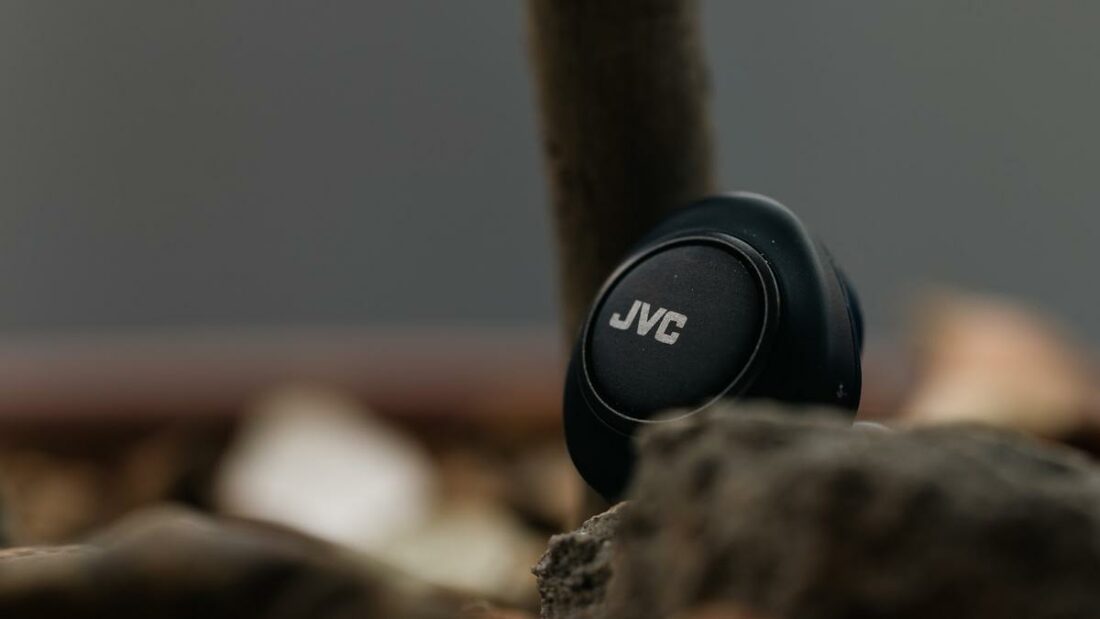
Mic demo
Sound ⓘ
- Driver: 11mm single dynamic driver with wood diaphragm
- Sound Signature: Bass-boosted, V-shaped
- Bass: Good
- Mids: Average
- Treble: Average
- Sound Detail: Average
The FW1000T utilize a single, 11mm wood diaphragm dynamic driver from JVC with a carbon-coated PET surround. This is a similar setup to JVC’s flagship HA-FW10000, but the driver is not encased in Titanium, and there are several differences in the acoustic chamber.
To ensure proper airflow within the acoustic chamber, JVC has added extra room behind the drivers and a vent in the shell to regulate airflow.
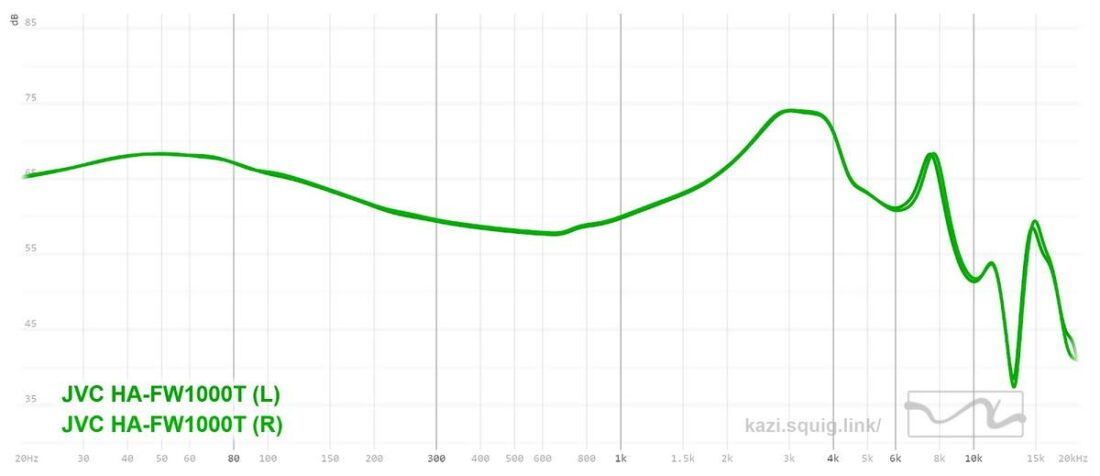
The JVC HA-FW1000T have a bass-boosted V-shaped tuning with boosted upper-mids.
The bass is definitely the star of the show, with the wood diaphragm adding extra richness to the bass timbre and texture. Timbre is a strong suit of JVC’s wood series of IEMs, and that trend continues on the FW1000T.
Sadly, the mids could do with some refinement. High-pitched vocals can sound unnatural due to the suck-out between 1-2kHz. The lower-mids are recessed, resulting in subdued male vocals and dampened snare hits.
Treble has no emphasis in the presence region, cutting down sibilance, but cymbals and hi-hats sound strangely subdued and blunted. Added airiness helps in avoiding congestion. However, the lack of energy persists, and there are instances of “splashiness” in certain metal tracks.
The staging is better than the Sony WF-1000XM4 but narrower than the Final ZE3000.
Microdynamics are above average. Macrodynamic punch could be better – it’s mushy and somewhat undefined. Imaging is good, second only to two of their peers in the Final ZE3000 and the WF-1000XM4.
Unfortunately, there is an “undocumented” issue on the FW1000T – low volume. I am not sure if it’s related to a weaker amp in the housing or some codec compatibility.
The volume is too low to listen to the IEMs in crowded places.
Fortunately, the class-leading ANC performance lends a helping hand here. The two mics (one feed-forward and one feedback) work in tandem to essentially filter out most of the environmental noise. Even high-frequency noises are dampened considerably, which propels these above the Sony IEMs in terms of ANC.
So, you must keep ANC turned on when listening to music, as without ANC the volume can be too low when commuting. Fortunately, the ANC does not worsen the sound, so keeping it on isn’t detrimental.
The transparency mode is also surprisingly competent, rivaling some full-size headphones. The K2 technology is JVC’s own take on an upsampler. They try to extrapolate the higher frequencies when fed with a “low resolution” (read: a frequency cut below 20kHz).
In practice, the feature has no impact in terms of fidelity. It eats up the battery instead, so I turned it off (it’s on by default).
Connectivity ⓘ
- Audio Codec: SBC, AAC, AptX Adaptive
- Bluetooth Version: 5.2
- Bluetooth Chip: Unspecified
- Auto-connect when: Earbuds taken out of the case
- Average drop-outs in an hour: 0-3 times
- Multi-point connection: No
Multipoint support is absent, which is a letdown. AptX Adaptive codec is there, but LDAC is absent.
Waterproof ⓘ
- IP Rating: IPX4
The IPX4 rating means the JVC HA-FW1000T are secure from minor splashes and water sprays. There is no dust or ingress protection, so keep these away from dirt.
Software ⓘ
- No software support.
- Auto-Pause: when taken off the ears.
Another big omission of the FW1000T is the lack of a companion app. You are stuck with the factory defaults.
The auto-pause feature works seamlessly. Wear detection is also handy, pausing the music when both buds are removed or switching to mono if only one is put into the case. The ANC can only be turned on or switched to Transparency mode, with no adjustment in-between.
Comparisons
vs Sony WF-1000XM4
JVC’s biggest competition comes from within their own neighborhood: Sony’s WF-1000XM4. The Sony IEMs offer excellent ANC and perhaps the best “app” experience.
In terms of comfort, fit, and battery life – I have to give the nod to the JVCs. The Sonys have a notorious battery issue, and the housing is not as ergonomic as the JVC.
Moreover, the ANC on the JVC is better, which surprised me. Sony usually has a stronghold here, but JVC manages to outclass them with the FW1000T.
What’s bad, though, are the mics, which are nowhere as good as the WF-1000XM4’s mic array.
As for the sound, the WF-1000XM4 have better balance in the mids. The treble is dark on both, but the FW1000T have more airiness up top. The bass has a more satisfying punch on the WF-1000XM4, while the FW1000T have better texture and sub-bass rumble.
Overall, the WF-1000XM4 are better allrounders (as long as the battery holds, that is), while the FW1000T offer superior comfort and ANC performance.
Conclusion
The price tag is the biggest hurdle that the JVC HA-FW1000T have to overcome, all things considered. It would be easier to overlook the poor mic performance and the less-than-stellar sound quality if they were cheaper.
Sadly, the high price makes it impossible to ignore their shortcomings. Despite the class-leading ANC, great design, and exceptional comfort, I hesitate to recommend the FW1000T. They need to improve at the basics to get a pass.
